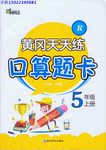题目内容
【题目】My father left me with the feeling that I had to live for two people, and that if I did it well enough, I could make up for the life he should have had.
A. besides B. therefore
C. somehow D. otherwise
【答案】C
【解析】考查副词。句意:父亲给我留下了一种感觉,那就是我必须为了两个人生活,如果我生活得足够好,那就能以某种方式弥补他本来该有的幸福生活。somehow"以某种方式",符合语境。besides"另外";therefore"所以";otherwise"否则",故选C。

练习册系列答案
 黄冈天天练口算题卡系列答案
黄冈天天练口算题卡系列答案
相关题目